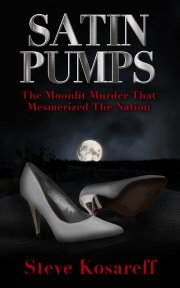Aviation has always been a passion of mine. Given that it can also be a world rich in mystery and adventure, it provided the template for my debut novel, THE STRAIT.
Given this lifelong affair with flight, it’s only natural when looking back, that my first real job would have been with an outfit like Grumman Aircraft Engineering Corp.
I’d been out of the Air Force barely a week when I found myself being escorted to the aerospace giant’s Flight Avionics hangar where I’d spend much of the next couple of years either sweating or freezing as an avionics tech and eventually either elated or terrified as a flight test crewman (a half-baked “Goose” to some test pilot’s “Maverick”). But, my most vivid memories of that first day on my first civilian job, came flooding back to me this week like never before.
I recall how my orientation escort had walked a young wide-eyed me through Plant-2, Plant-3, Plant-5, etc. deliberately passing along the lines of sleek jets where they stood in advancing stages of completion, describing each in its turn—Hawkeye, Mohawk, Intruder, Gulfstream–I remember, though, that my eyes kept darting to another, somewhat isolated area of the space.
At the far end of the vast production floor, stood the strangest looking object I’d ever seen; stranger still, it seemed, for its gangling legs and sharp, decidedly un-aerodynamic angles as it stood alone against the backdrop of “real” flying machines that dominated the cavernous expanse (which space is now a movie sound stage; talk about swords into plowshares).
“That’s a LEM prototype,” my escort explained to my query: a Lunar Excursion Module as it was called at the time (“Excursion” later being dropped from the name).

I’d walk past more of those things—the real ones–countless times over the next couple of years, recalling now how the first “LEM” became an LM, then two LMs, and eventually no LMs as one by one they made their way to the Cape (and beyond!). I’d never learn exactly which of those wonderful machines would be The Eagle. For, in a supreme irony I had to leave Grumman for work at a subcontractor (General Instrument) in order hat I might actually work on a tiny aspect of Apollo itself. For, by 1968 the project had consumed the collective psyche and much of the workforce of my Long Island town and its environs, and I was by no means immune to its lure. But, here’s the thing. The prevailing wisdom at the time, at least among those of us fortunate enough to have stood quite close to it all, was that Apollo would be but a baby step toward manned missions to the planets. Perhaps that is so in the grand scheme, yet here, 50 years on, Apollo remains paramount among our nation’s, our era’s, and our species’ greatest achievements. But beyond even than that, Project Apollo is a vivid reminder of what we’re capable of when we, Americans—even in times of great social strife and conflict (and the Sixties was certainly that) pull together toward a common, uplifting, unifying, humanity-affirming goal.





 Join our email list
Join our email list
Leave a Reply